Detail from H39357/126, showing the entrance to the waxworks, 1887. Window advertises Dr. Lynn’s “Idhas” optical illusion.
In our previous blog on the Melbourne waxworks, we examined the often grisly appeal of its wax figures and Chamber of Horrors.
Another aspect of the waxworks’ perennial popularity was its lively tradition of vaudeville and sideshow entertainment. While such amusements had always been a part of the waxworks’ offering, it was under Max Kreitmayer’s management (1869-1904) that the waxworks reached new heights of novelty. Anatomical modeller by trade but a showman at heart, Max was always on the lookout for the latest curiosity to capture the public imagination.
In 1888 the Melbourne Punch reported: ‘A LARGE new hall, filled with fresh attractions, has been added to the already big show at the Waxworks’. [1] Visitors could enjoy ‘drawing room entertainment’, comprising of specially selected artists, performing afternoon and evening. This could range from ventriloquists to chorus girls, boxing kangaroos to glass blowing demonstrations.
John Wesley Simmons Lynn went by a number of pseudonyms throughout his international career, and was famous for his optical illusions, appearing at the waxworks a number of times. Legend has it that Houdini went to see one of Dr. Lynn’s magic shows as a boy and as a result was inspired to become a magician when he grew up. [2]
The Age reported on Lynn’s Thauma half-lady illusion in 1885:
“[Thauma] consists of the upper half of a lady, whose body appears to have been cut in two at the waist… the puzzle is to ascertain what has become of the lower extremities. The theory of a mirror beneath the shelf is inapplicable, as a sword is passed in every direction immediately below the lady…The public are permitted to approach as close as they choose, and shake hands with the visible portion of this remarkable lady, in order to satisfy themselves that she is real flesh and blood not a dummy. ” [3]
“Thauma” half lady illusion, Waxworks poster; ALMA 93.2/60
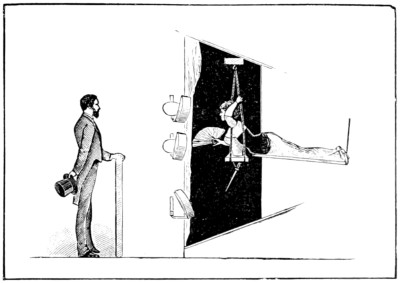
Magic: stage illusions and scientific diversions including trick photography
One of the most sensational acts of 1889 was Amphitrite the water nymph:
‘The scene represents a cave under the sea, the illusion in this respect being absolutely perfect…In the water which fills the cave a young and beautiful water nymph appears gracefully floating, swimming and diving. The lady who represents the part is evidently quite comfortable, for she smiles and looks very sweetly at her audience. She must be impervious to headache, for she is upside down for a considerable portion of her time…’ [4]
This unique spectacle – achieved through the use of mirrors – attracted some 2,500 people in one day [5], and was said to eclipse even the Eiffel tower as an attraction at the Great World Show in Paris that same year [6].
Amphitrite – Afternoon & evening daily, Waxworks poster; H2000.180/59
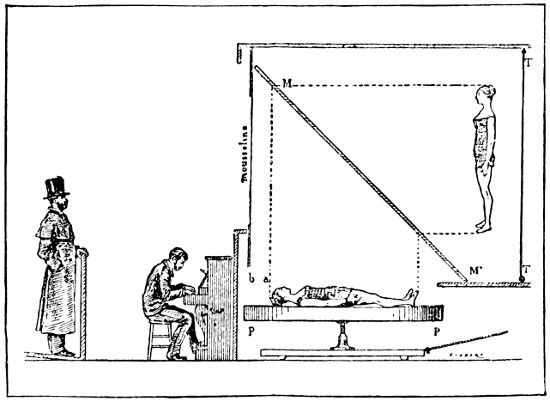
Magic: stage illusions and scientific diversions including trick photography
Living ‘exhibits’
In addition to sideshow and magic acts, ‘living freaks’ – people with extraordinary and unique physical attributes and abilities – were a consistent part of the waxworks’ offering. The exhibition of ‘freaks of nature’ for entertainment had been practised since the 16th century in Britain and at its height in the 19th century was a socially accepted, and common feature of circuses and travelling shows. While we condemn this practice as exploitative and offensive today (and frequently racist and sexist), this industry could offer substantial opportunities to performers, many who were active agents in this lucrative global economy.
In 1909 Sacco Homan – the Original World Famous Fasting Man (ironically from Hungary) – broke his own world record by fasting for 53 days in a glass case at the waxworks. He remained on constant public display as he apparently survived on nothing but soda water and cigarettes. By day 53 he had shed about 26 kilos from his 6 foot frame. A large crowd attended to watch him freed from his glass prison to break his fast in a somewhat humble fashion – a plate of brown bread, scrambled eggs and ham, washed down with a jug of Bacchus Marsh milk. [7]
Table Talk, 14 October 1909, p. 33
Fedor Jeftichew, otherwise known as Jo-Jo the Russian dog-faced boy, a well-known member of American circus pioneer P.T. Barnum‘s troupe, caused a frenzy when he made his first appearance in Australia in Melbourne on the 1st of June, 1889. The admission price was two shillings.
One newspaper article noted:
‘Ain’t they just doin’ big biz. with Jo-Jo. Rather. The Waxworks are a centre of attraction day and night, and the money is ‘a-comin’ in shovelfuls.’ [8]
‘The Bourke street footpath is so crowded in front of the Waxworks that a police constable is specially told off to regulate the traffic, and thus we have confirmed the accuracy of Trinculo’s moralising in the “Tempest,” on the readiness of the people to pay to see monsters…’ [9]
Charles Sherwood Stratton – aka General Tom Thumb – was another famous member of Barnum’s assemblage, who toured Australia in the 1870s. It was claimed that he stopped growing when he was six months old, and was two feet one inch tall until he became a teenager. His final height was said to be three feet four inches and he eventually weighed 70 lbs. [10]
General Tom Thumb, 1844 (Charles S. Stratton); P.112/NO.446
The waxworks included the likeness of Chang Wu (who went under several names) – otherwise known as Chang the Chinese giant, who toured Australia extensively before he met and married his second wife in Sydney. When he died in 1893 his coffin was purportedly 8 feet 6 inches (2.6 m) long. [11]
Chang the Chinese Giant, 1870; H32780
Born in South Carolina to slave parents, Ella Grisby (or Ella Williams) was known as Abomah the African/Amazon Giantess. She toured Australia touted as the tallest woman on earth – said to be a dizzying 8 feet tall. She was famous for being magnificently turned out in elaborate clothing. One newspaper noted her arrival by steamship, observing: ‘For the convenience of Miss Abomah it was found necessary to knock two cabins into one.’ [12] A special bedstead and furniture needed to be custom-made for her during her stay in Melbourne. [13]
Local talent also featured, such as the Australian Tom Thumb – John Armstrong – who was born in North Melbourne, and the so-called Giant Family (siblings Clara, Ann and Tom Snell) from Gippsland – who appeared at the waxworks in 1886 before touring Australia, and then America as The Australian Juvenile Giant Family.
Changing attitudes towards the end of the 19th century thankfully led to the decline of this controversial form of entertainment.
John Armstrong, the Australian Tom Thumb, 1870; H96.160/1591
‘The Giant Family’ from Gippsland, exhibited at the Wax Works; H88.50/83
Sources:
[1] Melbourne Punch, November 29 1888, p.10.
[2] http://www.themagicdetective.com/2010/12/who-inspired-houdini.html
[4] The Herald, 30 November 1889, p.2.
[5] The Age, December 2 1889, p.5.
[6] The Argus, 4 December 1889, p.12.
[7] Bendigo Advertiser, 8 December 1889, p.5.
[8] The Lorgnette, 8 June 1899, p.6.
[9] The Australasian, June 15 1889, p.11.
[10] https://en.wikipedia.org/wiki/Charles_C._Stratton
[11] https://en.wikipedia.org/wiki/Zhan_Shichai
[12] The Ballarat Star, August 16 1904, p.6.
[13] The Horsham Times, 26 August 1904, p.2.
Further Reading:
Explore more of the State Library’s W.G. Alma Conjuring Collection and view the Magic and Magicians research guide.
Victorian popular culture [electronic resource]. Circuses, sideshows and freaks (Available to access online for Victorian registered members)
Michael M. Chemers, Staging stigma : a critical examination of the American freak show.
Mimi Colligan, “Waxworks shows and some of their proprietors in Australia, 1850s-1910s”, Australasian Drama Studies, Apr 1, 1999, Vol.34, pp.86-107. Available in print, or online to Victorian registered library members.
Terence FitzZimons, Two fat ladies and Hercules Tom: the story of the Australian giant family.
Joe Nickell, Secrets of the sideshows.
Joanna Gilmour, Sideshow alley : infamy, the macabre & the portrait.
Accompanying online exhibition, National Portrait Gallery of Australia: https://www.portrait.gov.au/exhibitions/sideshow-alley-2015
You can view a number of portraits of other waxworks celebrities on the National Portrait Gallery of Australia website, including Chang the Chinese Giant, and the Australian Tom Thumb, John David Armstrong.
You may also like
The marvellous and macabre Waxworks, part one: ‘…the more murderers, the more it thrives.’
Fighting Jack: Melbourne’s first boxing kangaroo
Ask a Librarian
Direct from the State Library Victoria reference desk – our librarians share stories, resources and research tips, as well as some of their favourite queries (as asked by you!).
See more of our videos on our YouTube channel.
Images in Waxworks video by order of appearance:
- At the waxworks, 1876 A/S23/12/76/148.
- Bourke Street, north side between Russell and Swanston Streets (circa 1888), H81.111.
- Waxworks advertisement, Sam Slick in Victoria, 6 November 1879.
- “At the waxworks and museum”, Melbourne Punch, 16 April 1891, p 7.
- “Thrills and chills in the waxworks”, The Argus 10 June 1939, p. 3.
- “The Waxworks show that startled Melbourne”, Sporting Globe, 21 October, 1939 p. 7.
- “At the waxworks”, Sydney Punch, 22 August, 1873, p. 10.
- “Thrills and chills in the waxworks”, The Argus, 10 June 1939, p.3.
- Death mask of Ned Kelly made by Maximillian Kreitmayer, H2001.241.
- Marcus Clarke at 20, H81.204/2.
- Burke and Wills wax diorama at the waxworks from 1862, H2011.8.
- Barbarous murder in Little-Lonsdale-St, PN21/04/77/00.
- Death mask and cast of hand of Frederick Bayley Deeming, Accession no: H29467, H29468.
- “The atrocities at Windsor and Rainhill”, The Herald, 2 April 1892, p. 1.
- Image of Martha Needle, MS 8296.
- Rough on Rats – https://blogs.slv.vic.gov.au/such-was-life/martha-needle-melbournes-19th-century-serial-poisoner/
- “The Richmond poisoning case”, The Sydney Morning Herald, 26 September 1894, p. 5.
- At the waxworks, 1876, A/S23/12/76/148.
- Bourke Street, north side between Russell and Swanston Streets (circa 1888), H81.111.
- Parer’s Crystal Cafe [200 Bourke Street], H39357/126.
- Atlas & Vulcana, H93.406/15.
- A chorusline of 8 dancers and a principal girl, H90.108/138.
- “Jack the fighting kangaroo”, Melbourne Punch, 16 April 1891, p 7.
- H. S. Lynn, magician, H88.50/5.
- Amphitrite – Afternoon & evening daily, Waxworks poster, H2000.180/59.
- Magic: stage illusions and scientific diversions including trick photography
- Magic: stage illusions and scientific diversions including trick photography
Sound effects (People talking, Eerie, Circus, Applause, Water flowing in underground cave) courtesy of freesfx.co.uk

![Detail from image Parer's Crystal Cafe [200 Bourke Street] showing the entrance to the waxworks](https://blogs.slv.vic.gov.au/wp-content/uploads/2020/04/a16862-838x1024.jpg)

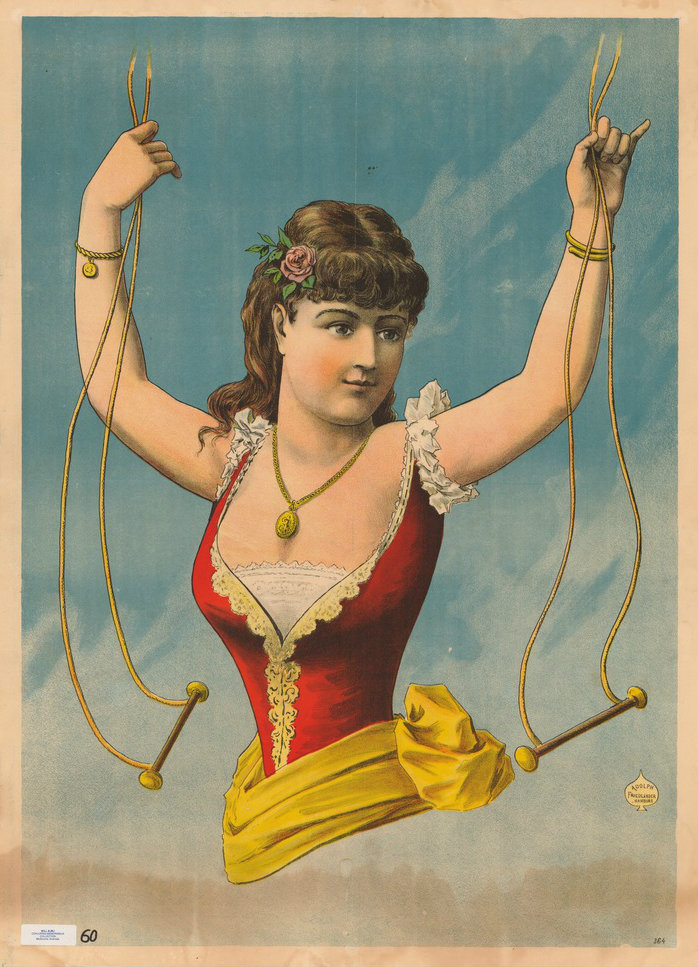

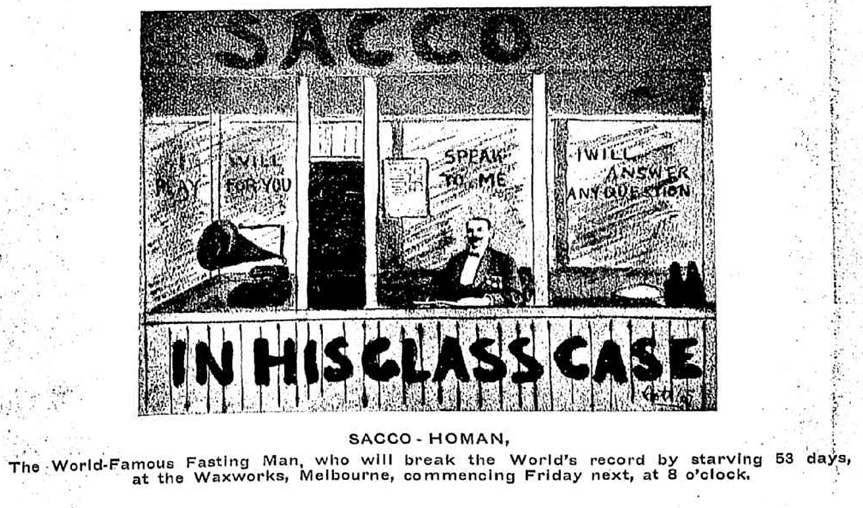

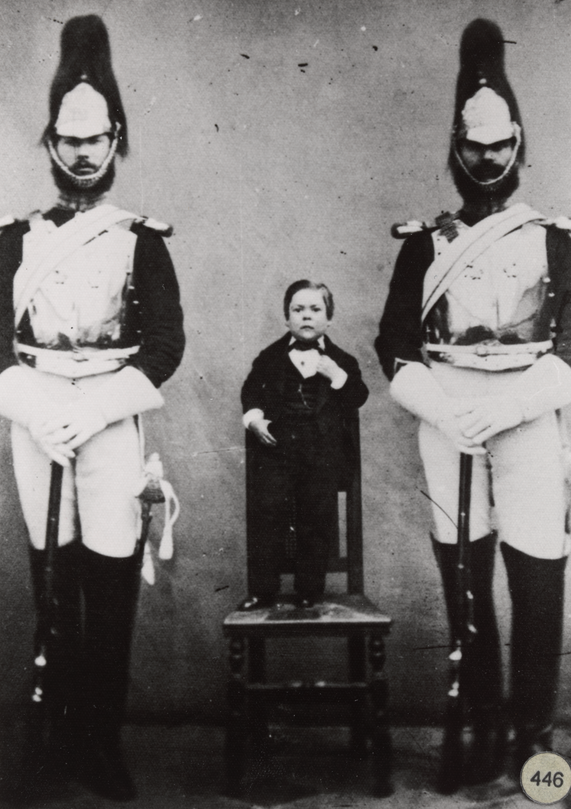
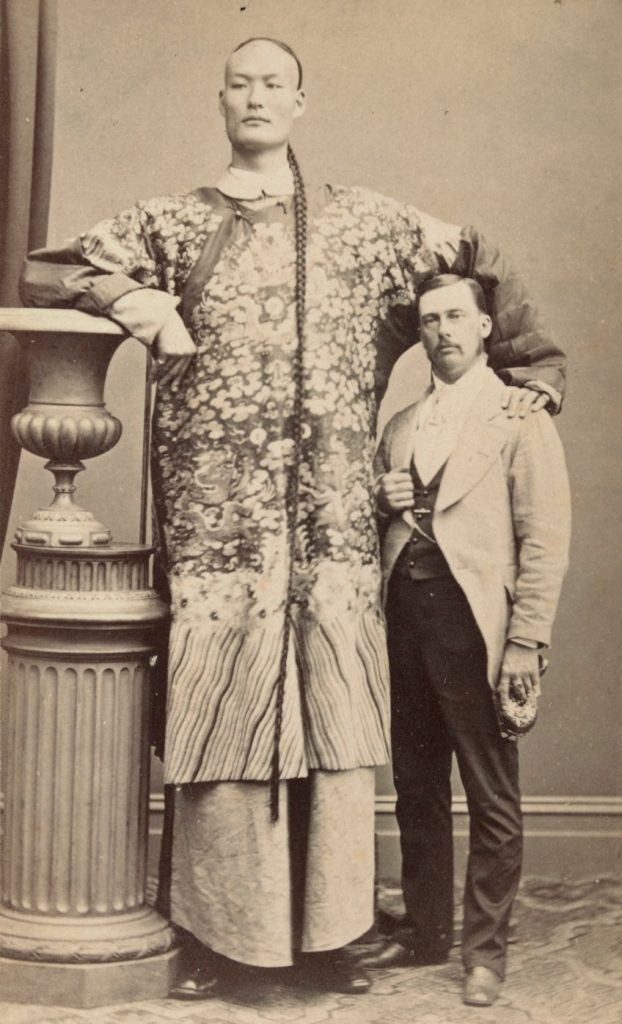
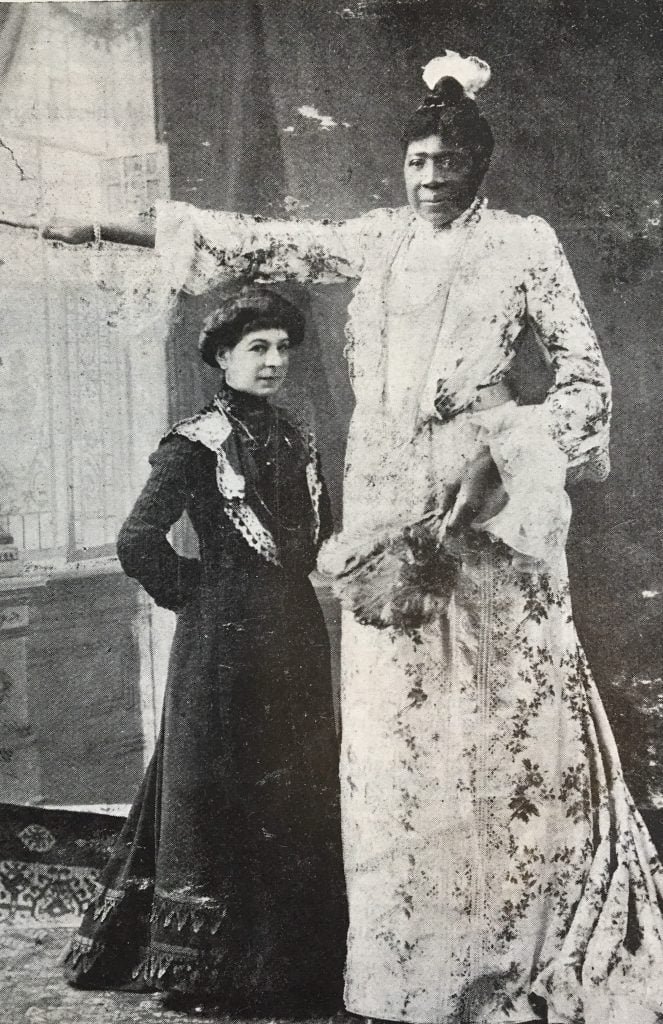
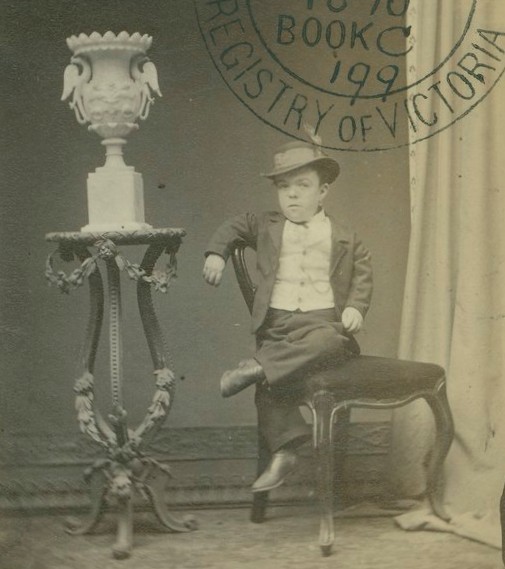

Thank you. I have been researching the case of “Blue Tom” Jones who was an ex-convict who attacked a woman and set her house on fire in 1869 near Whittlesea, Vic. Upon capture he committed suicide. You can read about it from this list of newspaper articles compiled on Trove, one of which mentions that Jones “became” a figure at Kreitmayer’s waxworks but I have found no other evidence of this.
https://trove.nla.gov.au/list?id=142424
Hi Liz,
We have a number of exhibition catalogues for the waxworks, though most of them are pre-1869. The catalogue for 1912 has been digitised and I can’t spot Jones in the Chamber of Horrors. We do have one for circa 1903 which is not digitised. I can check it for you when we are working back onsite.
Kreitmayer – ever enterprising – definitely took a cast of Blue Tom’s face.
You might have seen this:
“Mr Kreitmeyer, of the wax-works, took a cast of the criminal’s head, and upon examination found “destructiveness prominently developed.”
THE WHITTLESEA OUTRAGE. (1869, August 23). The Ballarat Star (Vic. : 1865 – 1924), p. 4., http://nla.gov.au/nla.news-article112891746.
Cheers,
Kylie
thank you this is wonderful.
Thank you Lynette – glad you enjoyed the blog!
Kylie